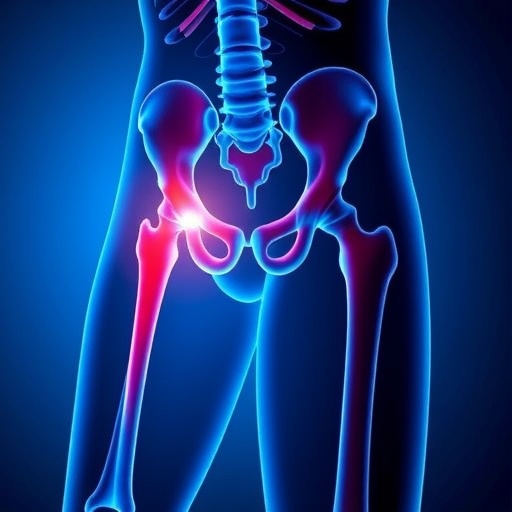
In recent years, the landscape of medical interventions for cerebral venous thrombosis (CVT) has undergone substantial transformation, revealing new potential for endovascular treatments. A groundbreaking multicenter study conducted in China provides insightful data, highlighting the effectiveness and potential of endovascular therapy as a treatment modality for this often-overlooked condition.
Cerebral venous thrombosis is characterized by the formation of blood clots in the brain’s venous sinuses, leading to serious complications, including strokes. Although traditionally managed conservatively, with anticoagulation therapies being the gold standard, the limitations of this approach have prompted a need for alternative treatments. Recent advancements in interventional radiology have paved the way for endovascular techniques, opening new avenues for patients suffering from CVT.
The Chinese multicenter study, spearheaded by researchers Bian, Wang, and Liu, represents a significant step toward understanding the efficacy of these endovascular treatments on a larger scale. By examining the outcomes of patients treated with such methods, the study provides a valuable framework for clinicians seeking more effective therapeutic interventions for CVT. The research team meticulously collected and analyzed data from several centers, ensuring a diverse and representative cohort of participants.
Endovascular therapies involve the direct manipulation of the vascular system, utilizing catheters to deliver treatment directly to the site of the clot. This technique differs significantly from traditional approaches, offering the potential to restore normal blood flow more quickly and effectively. Within this study, various endovascular methodologies were explored, including mechanical thrombectomy and thrombolysis, which may offer superior outcomes compared to conventional strategies.
The implications of adopting endovascular therapies for CVT are substantial. As the prevalence of this condition is often underestimated, many patients may be missing out on timely intervention that could prevent severe complications. The findings of this study could foster an increased awareness among healthcare professionals regarding the importance of prompt diagnosis and treatment tailored to the specific needs of CVT patients.
The researchers took a deep dive into patient outcomes, assessing not only the immediate results of endovascular treatments but also the long-term effects on cognitive function and quality of life. By implementing standardized metrics for evaluation, the study aims to provide concrete evidence supporting the incorporation of endovascular therapy into mainstream clinical practice for CVT management.
One of the significant findings from the research indicates that patients receiving endovascular treatment experienced quicker symptom relief and fewer complications when compared to their counterparts who underwent only conservative management. This observation is crucial, as fast intervention can significantly influence overall recovery and reduce the risk of long-term disability associated with CVT.
Additionally, the researchers documented the procedural safety of these treatments, noting that while endovascular approaches may carry inherent risks, the benefits observed in the patient population outweighed these concerns. Understanding the risk-benefit ratio is essential in guiding clinical decision-making and seems to support the case for making endovascular treatment a standard consideration in dealing with acute CVT cases.
Not only does the study highlight the efficacy of endovascular techniques, but it also calls attention to the need for further education for practitioners on the treatment of CVT. A shift in perspective among medical professionals could drive better understanding and implementation of innovative treatment modalities, thus improving patient outcomes across the board.
As the field evolves, continuous research is critical. It remains vital for future studies to assess the long-term outcomes of patients who have undergone endovascular therapy for CVT. The aim would be to refine techniques and establish protocols that maximize patient safety and efficacy. This study sets the stage for such future inquiries, providing a template for prospective research design and outcome measurement.
The collective efforts of the research team shed light on the importance of collaboration in medical research. The multicenter design enabled them to gather a wealth of data, making it possible to draw more robust conclusions about the effectiveness of endovascular intervention across varying populations and clinical settings. The implementation of such collaborative studies will be essential in advancing our understanding of CVT treatment.
In conclusion, the findings from the Chinese multicenter study represent a pivotal moment in the treatment of cerebral venous thrombosis. With the evidence supporting endovascular therapy, there is an abundant opportunity to reshape approaches to this complex condition, promoting enhanced patient outcomes and expanding therapeutic options in the medical field. Ongoing dialogue and research will be essential as the medical community works to integrate these findings into everyday practice.
As clinicians continue to navigate the complexities of cerebral venous thrombosis, the insights gained from this research could not only transform treatment protocols but also foster a deeper understanding of patient needs. With continuously evolving technology and methods, the future appears promising for individuals grappling with this challenging diagnosis.
The potential for endovascular interventions to become a central component in managing cerebral venous thrombosis cannot be overstated. As more data emerges, demonstrating their impact, clinicians must remain vigilant in adapting their practices to incorporate these innovative therapies, paving the way for improved prognoses and quality of life for their patients.
This research not only advocates for a shift in treating cerebral venous thrombosis but also inspires additional studies, thus ensuring the cycle of learning and improvement never ceases. The more we uncover about effective treatment strategies, the better we can heal those affected by CVT, fulfilling our collective commitment to providing optimal patient care.
Subject of Research: Cerebral Venous Thrombosis and Endovascular Treatment Techniques
Article Title: Endovascular treatment for cerebral venous thrombosis: a multicenter study in China
Article References:
Bian, HT., Wang, X., Liu, GY. et al. Endovascular treatment for cerebral venous thrombosis: a multicenter study in China.
Military Med Res 12, 16 (2025). https://doi.org/10.1186/s40779-025-00605-3
Image Credits: AI Generated
DOI:
Keywords: Endovascular treatment, cerebral venous thrombosis, multicenter study, mechanical thrombectomy, thrombolysis, patient outcomes, clinical practice, interventional radiology.
Tags: alternatives to anticoagulation therapyblood clot treatment in brain sinusescerebrovascular conditions managementChinese research on endovascular therapydata analysis in medical researcheffectiveness of endovascular techniquesendovascular treatment for cerebral venous thrombosisimplications of CVT treatment innovationsinterventional radiology advancementsmulticenter study on CVT therapiesoutcomes of CVT patientstherapeutic interventions for CVT




